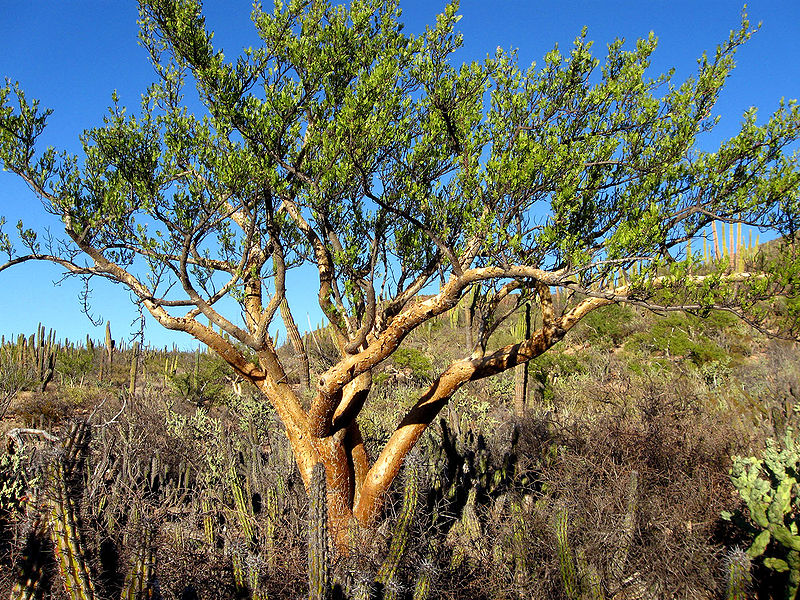

Contributor
- Topics: Archive

Rare in the wilds of China, Emmenopterys henryi may be even rarer in cultivation. Yet this interesting tree continues to attract attention, not necessarily because of its rarity but because of a statement by the indefatigable plant hunter, Ernest H Wilson. Trained at the Royal Botanic Gardens, Kew, Wilson first went to China in search of ornamental plants in 1899. Sent by the Veitch & Sons firm, the Royal Exotic Nursery, to find the dove tree (Davidia involucrata), he spent the better part of a decade collecting and introducing from China a wealth of plants new to cultivation in Europe and North America. His well-publicized efforts gained him the nickname of “Chinese” Wilson.
First introduced by Wilson in 1907, Emmenopterys henryi owes its fame to Wilson’s description: “one of the most strikingly beautiful trees of Chinese forests.” Because of his stature in the world of horticulture, this comment drew a great deal of attention. However, the excitement slowly drifted into frustration, as the trees in cultivation refused to bloom. The first tree in Britain to flower, in 1987 at Wakehurst Place, was more than seventy-five years old; the first in Europe, also decades old, was at Villa Taranto on Italy’s Lake Maggiore, in 1971. The Wakehurst Place tree has not flowered since; nor have any others in Britain. The first to flower in North America was in the collection of Dr Allen Hirsh of Silver Spring, Maryland, in 1994; it originated from seed germinated at the Arnold Arboretum in 1979. Since then, a number of trees in the southeastern US have begun blooming.

Remarkably, two six-year-old trees have now flowered at Quarryhill Botanical Garden in Sonoma County, California. As far as we know, these are the first to flower in western North America and may be the youngest ever to flower in cultivation. Our trees grew from seed collected during Quarryhill’s expedition to eastern Sichuan Province in 1996, in partnership with the Royal Botanic Gardens, Kew and the Howick Arboretum. The seeds germinated in the following year; one was planted in the ground in 1998, the other in 2000. Showing extraordinary vigor and health, both have grown as shrubs, lacking a single leader, and have reached fifteen feet and eight feet in height, respectively. The flower buds, first noticed in late June 2004, began opening in July and continued well into August.
Emmenopterys henryi has a wide distribution in south-central China, but is endangered due to agricultural expansion, logging, and poor forest regeneration. It is a monotypic genus of the mostly tropical madder family (Rubiaceae) and can grow to over one hundred feet, although large specimens are extremely rare. Endemic to China, it is a deciduous tree having large, dark green, opposite leaves with red petioles. The clusters of fragrant, creamy white, one-inch, funnel-shaped flowers can be up to ten inches across and are surrounded by large white “bracts,” similar to those of Schizophragma. According to the China Plant Red Data Book, it does not flower until thirty years of age and usually sets seed once every two to four years.
Fortunate to have seen Emmenopterys henryi in the wild and now to have it blooming in cultivation, would I concur with ‘Chinese’ Wilson? Yes, it is indeed beautiful. And, one thing is certain: I have a new favorite tree.

Share:
Social Media
Garden Futurist Podcast
Most Popular
Videos
Topics
Related Posts

Ground Up Science for Greener Cities with Garden Futurist Dr. Alessandro Ossola
Spring 2023 Listen to the Podcast here. Alessandro Ossola is a scientist who gets very excited about the challenge of climate change allowing for an

Readying Urban Forests for Climate Realities with Garden Futurist Dr. Greg McPherson
Winter 2023 Listen to the Podcast here. “Going from the mow and blow to a more horticulturally knowledgeable approach to maintaining the landscape. And that

Welcome, Greywater, to the Garden
Summer 2022 Oh, summer: delightful warm air, tomatoes swelling on the vine, fragrant blooms on an evening stroll. When it’s warm and rainless, how is

Big Tree-Data and Big-Tree Data with Garden Futurist Matt Ritter
Summer 2022 Listen to the full Garden Futurist: Episode XV podcast here. We are in an environmental crisis right now in many parts of California








Responses